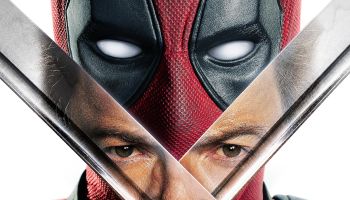There is an indelible, Pulitzer Prize winning photograph of an emaciated Sudanese child struggling to get to a feeding center while a vulture waits for her demise. It is etched in our minds as the staple image for the famine and civil war that plagued Southern Sudan. And while it brought attention to the country’s dire needs, it also sparked the ongoing debate about photojournalism ethics, prompting a nation to demonize the photographer for his lack of intervention.
Turns out, Kevin Carter did actually intervene, chasing the vulture away only after sitting under a tree, crying and smoking for a long time. Eventually, haunted by the horrific images from Sudan and the backlash from the 1993 iconic photograph, he committed suicide.
DETAILS: Arrest Made In Fatal NYC Subway Push
Just this week, freelance photojournalist R. Umar Abbasi snapped a chilling photograph of New York subway rider Ki-Su Han as he struggled to get out of an oncoming train’s path. Unfortunately, he was struck and pronounced dead at St. Luke’s Hospital. With the eerie picture plastered on the front of the NY Post, Abbasi defended his photograph, contending that there wasn’t much he could do but get the attention of the train conductor by the flash of his camera.
What makes either one of these situations right or wrong?
Photojournalists have struggled for years between being either human or journalist first. At the risk of becoming the news themselves, photojournalists hold tight to their objectivity; if not they may lose their credibility as a journalist, or worse, become a victim as well.
DETAILS: Disturbing Footage Of NYC Dad Pushed To His Death On Subway Track
Surprisingly, some very notable journalists have rushed to Twitter and the airwaves to express their disgust for Abbasi’s photo, chastising him for snapping away with his camera while, in their opinion, disregarding the humanity of the situation.
NBC’s Today show hosts Al Roker and Matt Lauer agreed that the photographer should have helped the victim, calling the photograph “alarming.” Soledad O’Brian took to her Twitter to say this:
“I think it’s terribly disturbing – imagine if that were your father or brother.”
Is there anybody supporting this guy in his decision to take the photograph? Is there anyone lauding him for his photojournalism objectivity? Who are we to deem what someone should or could have done in a situation when we weren’t there? As journalists, should the above mentioned be defending him and scrutinizing the real problem here?
Both photos, while provocative in nature, have caused some discomfort, but what really bothers me is how these photographs, separated by almost two decades, have been distributed. Carter, who took his life under the scrutiny of his photograph, won a Pulitzer Prize when it debuted in the New York Times. But the NY Post, with their sensationalized headline and obvious disregard to the sensitivity of the subject, paraded the image the next day in a move that is proving to degenerate Abbasi’s credibility as a journalist…and in turn blames the wrong person.
What’s contradictory in a sense is America’s obsession with photographs of war, pain and death. These realms, being staples of American journalism and culture, are supposed to move us, make us take a stance and inform us about a situation. We straddle the fence, deeming what’s moral and what’s necessary with reckless abandon, basing our opinions about the situations from the opinions of talking heads.
We watch, fingers splayed over our faces, with extreme interest. Waiting to see the blood or the anguish. And publications know that. The NY Post gave us the news, despite the untactful and crude way that they did.
The point is that we don’t know what either one of us would have done in the 22-seconds between the time Han hit the tracks and his demise. And we don’t know whether or not we would choose human or journalist in the situation either. We’re not even sure how far Abbasi was from Han, and if he could have gotten there in time to save him. But I do know this: We need to make a decision about how “human” we want our journalists to be. Do we risk not getting authentic news because of their morals? Or do we deal with the gruesome reality that is news?
We can’t continue to straddle the fence, measuring bloodshed and anguish at different volumes as we go.
-Christina Coleman
PHOTO CREDIT: Kevin Carter/CORBIS/Sygma/NPR
















